Collective Molecular Activities of the Plant: Viburnum Ayavacense
Unknown.
Bolivia; Peru
Overview of Ingredients
26 All known Ingredients in Total
Unique ingredients have been isolated from this plant.Plant-Ingredients Associations were manually curated from publications or collected from other databases.
14 Ingredients with Acceptable Bioavailablity
Unique ingredients exhibit acceptable human oral bioavailablity, according to the criteria of SwissADME [PMID: 28256516] and HobPre [PMID: 34991690]. The criteria details:SwissADME: six descriptors are used by SwissADME to evaluate the oral bioavailability of a natural product:
☑ LIPO(Lipophility): -0.7 < XLOGP3 < +5.0
☑ SIZE: 150g/mol < MW < 500g/mol
☑ POLAR(Polarity): 20Ų < TPSA < 130Ų
☑ INSOLU(Insolubility): -6 < Log S (ESOL) < 0
☑ INSATU(Insaturation): 0.25 < Fraction Csp3 < 1
☑ FLEX(Flexibility): 0 < Num. rotatable bonds < 9
If 6 descriptors of a natural plant satisfy the above rules, it will be labeled high HOB.
HobPre: A natural plant ingredient with HobPre score >0.5 is labeled high human oral availability (HOB)
20 Ingredients with experimental-derived Activity
Unique ingredients have activity data available.Ingredient Structrual Cards

Ingredient ID: NPC95804
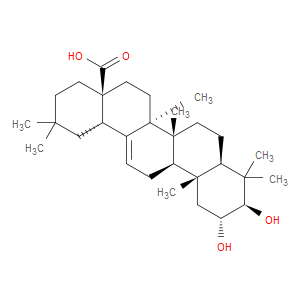
Ingredient ID: NPC84319
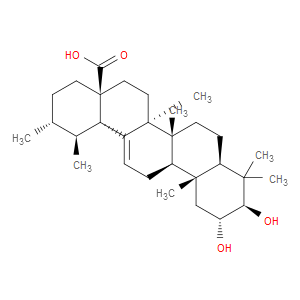
Ingredient ID: NPC71074
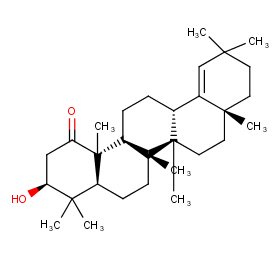
Ingredient ID: NPC69627
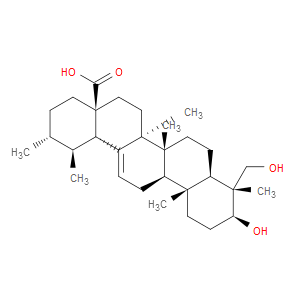
Ingredient ID: NPC61543
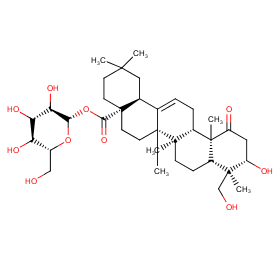
Ingredient ID: NPC60014
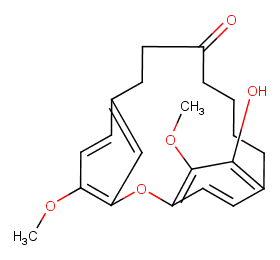
Ingredient ID: NPC5891
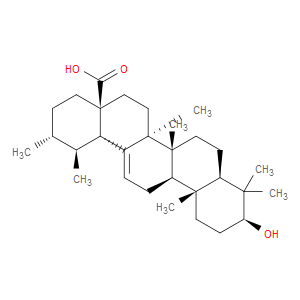
Ingredient ID: NPC51700

Ingredient ID: NPC44166
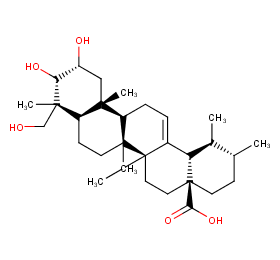
Ingredient ID: NPC32407

Ingredient ID: NPC302584

Ingredient ID: NPC296727

Ingredient ID: NPC242350
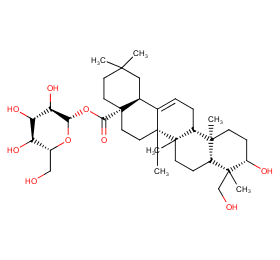
Ingredient ID: NPC237503

Ingredient ID: NPC232851
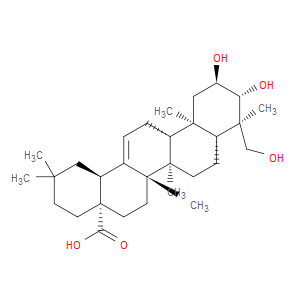
Ingredient ID: NPC231063
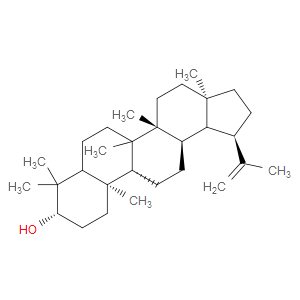
Ingredient ID: NPC192638

Ingredient ID: NPC187288

Ingredient ID: NPC185547
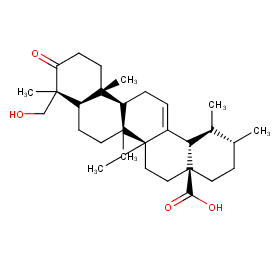
Ingredient ID: NPC173089
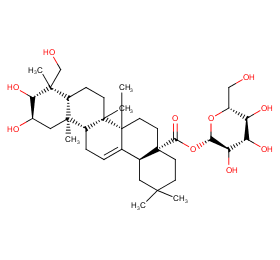
Ingredient ID: NPC150147
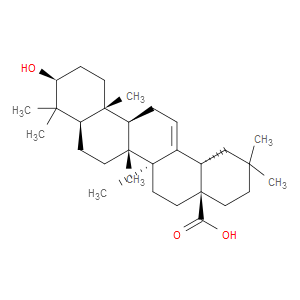
Ingredient ID: NPC142415

Ingredient ID: NPC128608

Ingredient ID: NPC123196
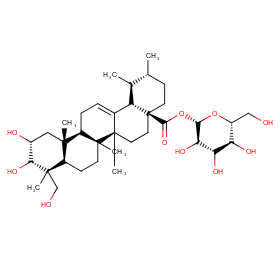
Ingredient ID: NPC110139
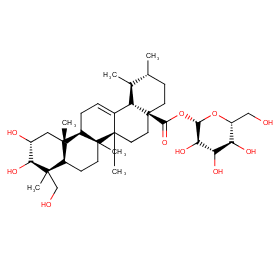
Ingredient ID: NPC108709
Classification of Human Proteins Collectively Targeted by the Plant
Detailed Information of Target Proteins
| Target Type | Protein Class | Gene ID | Protein Name | Uniprot ID | Target ChEMBL ID |
|---|---|---|---|---|---|
| Therapeutic Target | Enzyme | RECQL | ATP-dependent DNA helicase Q1 | P46063 | CHEMBL1293236 |
| Therapeutic Target | Enzyme | CES1 | Acyl coenzyme A:cholesterol acyltransferase | P23141 | CHEMBL2265 |
| Therapeutic Target | Nuclear hormone receptor subfamily 1 | RORC | Nuclear receptor ROR-gamma | P51449 | CHEMBL1741186 |
| Therapeutic Target | Nuclear hormone receptor subfamily 1 | NR1H4 | Bile acid receptor FXR | Q96RI1 | CHEMBL2047 |
| Therapeutic Target | Oxidoreductase | AKR1B10 | Aldo-keto reductase family 1 member B10 | O60218 | CHEMBL5983 |
| Therapeutic Target | Oxidoreductase | HSD11B1 | 11-beta-hydroxysteroid dehydrogenase 1 | P28845 | CHEMBL4235 |
| Therapeutic Target | Protein Phosphatase | CDC25B | Dual specificity phosphatase Cdc25B | P30305 | CHEMBL4804 |
| Therapeutic Target | Surface antigen | F3 | Coagulation factor III | P13726 | CHEMBL4081 |
| Therapeutic Target | Transcription factor | RELA | Nuclear factor NF-kappa-B p65 subunit | Q04206 | CHEMBL5533 |
Clinical trials associated with plant from natural product (NP) & plant level:
| Clinical trials type | Number of clinical trials | |
|---|---|---|
| 3 | ||
| NCT ID | Title | Condition | Form in clinical use | Associated by plant or compound |
|---|---|---|---|---|
| NCT02337933 | Effect of Ursolic Acid Administration on Insulin Sensitivity and Metabolic Syndrome | metabolic syndrome | Ursolic Acid (NPC51700) | |
| NCT03216876 | A Study Of Ursolic Acid For Primary Sclerosing Cholangitis | sclerosing cholangitis | Ursolic Acid (NPC51700) | |
| NCT04403568 | Testing the Synergism of Phytonutrients, Curcumin and Ursolic Acid, to Target Molecular Pathways in the Prostate | prostate cancer | Ursolic Acid (NPC51700) |
❱❱❱ Associated Human Diseases and Detailed Association Evidence
How do we define the Plant-Targeted Human Disease Association?
Associated human diseases of an individual plant are summurized based on FOUR types of association evidence, these include:
❶ Association by Therapeutic Target: Bioactive protein targets of the plant were defined in "Molecular Targets" section, target-disease associations collected from TTD database were subsequently used to build the associations between the plant and its targeted human diseases.
❷ Association by Disease Gene Reversion: Plant and a specific disease will be associated when >= 1 plant target gene overlaped with disease's DEGs.
❸ Association by Clinical Trials of Plant: Plant and a specific disease will be associated when >= 1 clinical trial (the plant is the intervetion) can be matched in ClinicalTrials.gov database.
❹ Association by Clinical Trials of Plant Ingredients: Plant and a specific disease will be associated when >= 1 clinical trial (the plant ingredient is the intervetion) can be matched in ClinicalTrials.gov database.
Associated Disease of the Plant | Association Type & Detailed Evidence |
|---|---|
Acute diabete complicationDisease Category: 05.Endocrine, nutritional or metabolic diseasesDisease ICD-11 Code: 5A2Y |
PTPN1,HSD11B1
|
Acute myeloid leukaemiaDisease Category: 02.NeoplasmsDisease ICD-11 Code: 2A60 |
PTPRC,RELA
|
Acute respiratory distress syndromeDisease Category: 12.Diseases of the respiratory systemDisease ICD-11 Code: CB00 |
F3
|
Acute/subacute hepatic failureDisease Category: 13.Diseases of the digestive systemDisease ICD-11 Code: DB91 |
RELA
|
Adenocarcinoma of bronchus or lungDisease Category: 02.NeoplasmsDisease ICD-11 Code: 2C25.0 |
AKR1B10
|
Adenocarcinoma of pancreasDisease Category: 02.NeoplasmsDisease ICD-11 Code: 2C10.0 |
CDC25B,CES1,RECQL,AKR1B10,PTPRC,HSD11B1,PTPN1
|
Adenocarcinoma of stomachDisease Category: 02.NeoplasmsDisease ICD-11 Code: 2B72.0 |
CDC25B
|
Alzheimer diseaseDisease Category: 08.Diseases of the nervous systemDisease ICD-11 Code: 8A20 |
HSD11B1
|
Atopic eczemaDisease Category: 14.Diseases of the skinDisease ICD-11 Code: EA80 |
RELA
|
Autoimmune diseaseDisease Category: 04.Diseases of the immune systemDisease ICD-11 Code: 4A40-4A45 |
RORC
|

